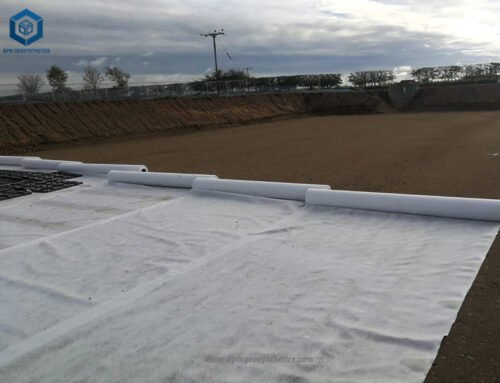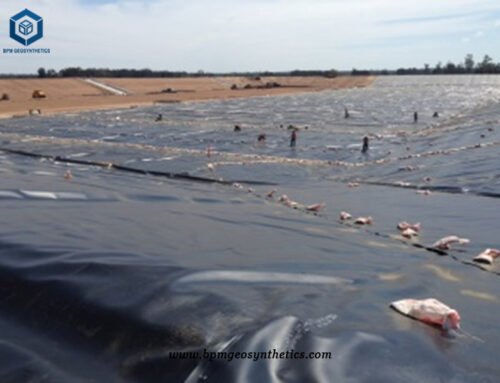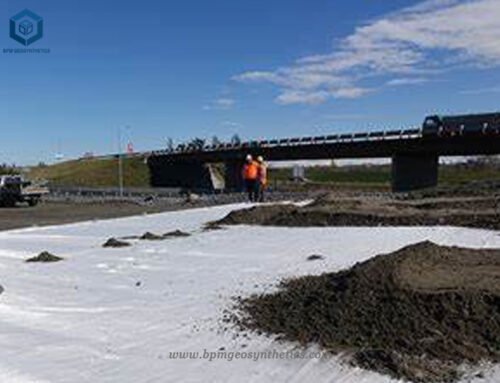HDPE geomembrane liner is the low permeable synthetic materials widely utilized in aquaculture and water containment projects. These liners serve as essential geotechnical engineering materials. BPM offers soooth and textured geomembrane liners with thickness ranging from 20 mils to 120 mils, ensuring reliable performance. Customers can benefit from the best factory prices, making BPM Geosynthetics a preferred choice for HDPE geomembrane liners.
1. What Is HDPE Geomembrane Liner?
HDPE (High-Density Polyethylene) geomembrane liners play a crucial role in various civil engineering and environmental applications. These liners are designed to provide reliable containment, barrier systems, and waterproofing solutions. Made from high-density polyethylene resin, HDPE geomembrane liners offer outstanding characteristics such as excellent chemical resistance, durability, flexibility, and impermeability.
The primary purpose of an HDPE geomembrane liner is to serve as a low-permeability synthetic membrane or barrier in conjunction with geotechnical engineering materials. It effectively controls the migration of fluids or gases within man-made projects, structures, or systems. The liner’s composition and formulation provide it with desirable properties, including high tensile strength, impact resistance, anti-penetration capabilities, and resistance to acids, alkalis, heat, weathering, and wear.
HDPE geomembrane liners find extensive applications in landfill projects, catering to waste management needs. They are suitable for waste landfills, industrial waste landfills, hazardous waste landfills, solid waste landfills, tailings landfills, waste slag landfills, tail mine seepage prevention, and other projects related to solid and hazardous waste containment.
When constructing solid waste landfills, it is essential to employ anti-seepage films with a minimum thickness of 1.5mm. Additionally, the width of the liner should exceed 6 meters to minimize the number of welded joints. Studies indicate that a significant portion of leakage in landfills occurs at these joints. To enhance performance, rough-surfaced textured HDPE geomembrane liners can be utilized on slope surfaces, increasing the friction coefficient and maximizing the available volume.
HDPE geomembrane liners are versatile materials extensively used in civil engineering and environmental applications. Their unique properties make them reliable barriers, providing containment and waterproofing solutions in various projects, particularly in landfill applications.
2. What Is The Best Thickness of HDPE Geomembrane Liner for Solid Waste Landfill?
The best thickness for an HDPE geomembrane liner in a solid waste landfill is generally 1.5mm or more. This thickness ensures effective seepage prevention and containment of the landfill. The liner acts as an anti-seepage layer, providing a barrier between the waste and the surrounding environment.
In landfill applications, thousands of tons of garbage are typically deposited, necessitating a robust liner to withstand the weight and pressure. The 1.5mm thickness or greater ensures the liner’s durability and ability to resist punctures and tears caused by sharp objects within the waste.
Additionally, it is recommended that the width of the liner be greater than 6 meters. This wider width reduces the number of welded joints required during installation. Studies have shown that approximately 70% of leakage in landfills occurs at these welded joints. By minimizing the number of joints, the risk of potential leaks and environmental contamination can be significantly reduced.
To enhance performance and stability, a rough-surfaced textured HDPE geomembrane liner can be used on slope surfaces within the landfill. This textured surface increases the friction coefficient, providing additional stability and preventing slippage of the waste material. Moreover, maximizing the available volume helps optimize the landfill’s capacity.
Using an HDPE geomembrane liner with a thickness of 1.5mm or more, a width greater than 6 meters, and incorporating a rough surface texture on slopes ensures effective containment and seepage prevention in solid waste landfills.
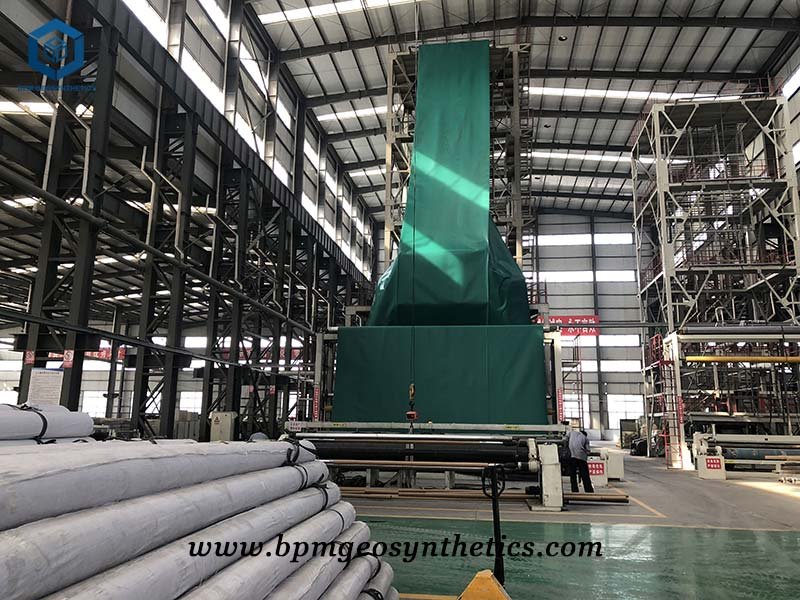
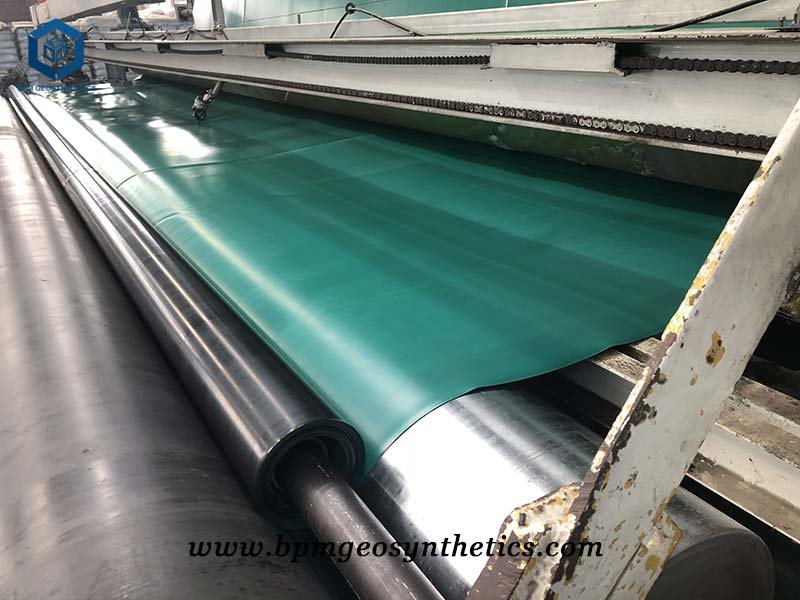
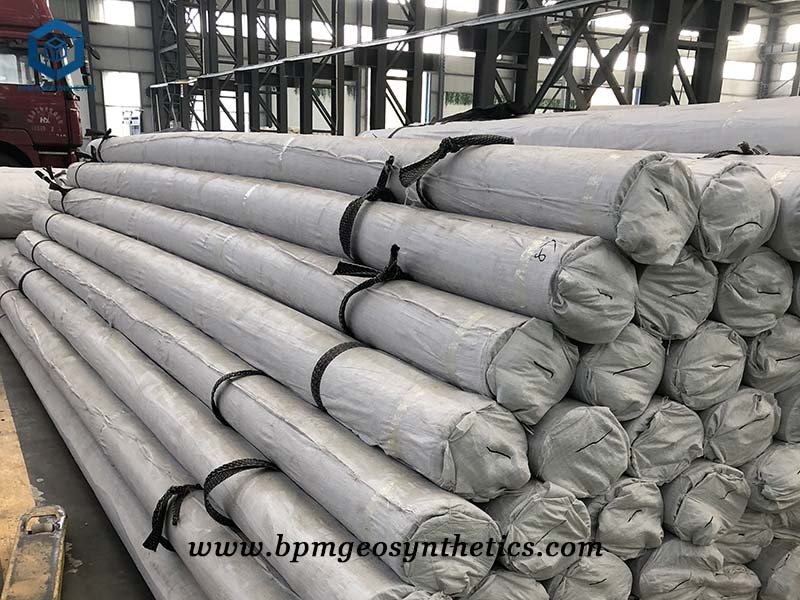
3. What Are Advantages of BPM brand HDPE Geomembrane Liner?
BPM HDPE geomembrane liners offer a range of advantages, including erosion resistance, temperature resilience, high tensile strength, anti-tearing capability, waterproofing, anti-seepage properties, low coefficient of thermal expansion, flexibility, and long service life. These qualities make them a reliable choice for various containment, barrier systems, and waterproofing applications.
3.1 Chemical and Biological Erosion Resistance
BPM HDPE geomembrane liners are highly resistant to chemical and biological erosion. They can withstand exposure to various substances, including acids, alkalis, and organic solvents, without deteriorating or losing their effectiveness.
3.2 Wide Using Temperature Range
These geomembrane liners have excellent temperature resistance, allowing them to be used in a wide range of temperatures. They can withstand both extreme heat and cold, ensuring their performance and integrity in diverse environmental conditions.
3.3 High Tensile Strength
BPM HDPE geomembrane liners possess high tensile strength, which means they can withstand significant pulling forces without breaking or tearing. This strength ensures their durability and ability to withstand the stresses associated with different applications.
3.4 Excellent Anti-tearing Capability
The geomembrane liners from BPM have an exceptional anti-tearing capability. This means they can resist tearing or ripping even under high stress or impact conditions, providing reliable protection against damage.
3.5 Excellent Waterproof and Anti-seepage Capability
BPM HDPE geomembrane liners are designed to offer excellent waterproofing and anti-seepage properties. They effectively prevent the migration of fluids, such as water or contaminants, through their impermeable structure, ensuring the integrity of containment systems.
3.6 Low Coefficient of Thermal Expansion and Flexibility
These geomembrane liners have a low coefficient of thermal expansion, meaning they undergo minimal dimensional changes with temperature fluctuations. This characteristic, combined with their flexibility, allows them to adapt to ground movements and maintain their effectiveness over extended periods.
3.7 Long Service Life
BPM brand HDPE geomembrane liners are known for their long service life. They are designed and manufactured to withstand the rigors of civil engineering and environmental applications, ensuring prolonged performance and cost-effective solutions.
4. How To Install HDPE geomembrane Liner?
Roll the surface to be laid and leveled, dig the blind ditch, and vent the exhaust pipe. More specific base processing can be handled according to design requirements.
After laying the geoprotective liner, the HDPE geomembrane liner can be laid. Prepare heavy objects such as sandbags and compact the paved HDPE geomembrane liner so that the wind does not blow up. When laying, the weld seam should be minimized, and the most suitable laying plan should be selected according to the actual site size.
Before welding, test welding first, and select the appropriate welding parameters according to the climate of the day. When welding, professional welding equipment should be used. For large-area welding of HDPE geomembrane liner, double-track hot-melt automatic crawling welding machine is adopted; for T-shaped and cross-shaped welding and filling, hot-melt extrusion welding machine should be used.
Steep slope welding with rope ladders or scaffolding. Welder technicians need to take safety measures.
Anchorage trench excavation: U-shaped ditch with anchorage groove size of 50cm×50cm×50cm, backfill or concrete with concrete; steep slope can be excavated and then anchored for anchoring; anchoring nail and bead can be used for rock layer Perform an anchor seal.
Our Ecuador customer sent us an inquiry on HDPE geomembrane liner for solid waste landfill by Google. When I got the inquiry, we recommended1.0mm HDPE geomembrane liner. As professional HDPE geomembrane manufacturers, we provided professional quotation sheet and more details of project design by communication and negotiation. Finally, we confirmed the specification on 1.0mm HDPE geomembrane liner. Then he asked for us to send our certification. After quotation and certification of HDPE geommebrane liner approved, our Ecuador customer placed the order.
5. Specifications of HDPE Geomembrane Liner for Solid Waste Landfill in Ecuador
- Total smooth geomembrane quantity – 27930m2
- Geomembrane thickness – 1.0mm
- Each roll size 7m*210m
6. About BPM Geosynthetics
BPM specializes in manufacturing and exporting one stop geosynthetics products and solutions to worldwide customers since its foundation in 2007. We have provided many types of effective and state of the art geomembrane, geotextile, geocell, geosynthetic clay liners (GCLs), drainage board, geogrid to over 36 countries.
BPM is not only manufacturing best quality geosynthetic products but also providing professional design and installation service. OEM, and ODM are also available. If you have any questions or inquiries, please contact us, we will reply as soon as possible.


